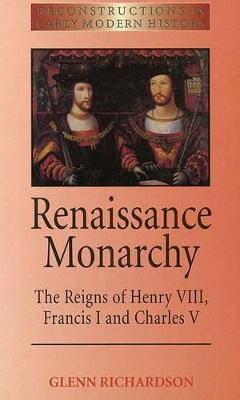Reconstructions in Early Modern History
1 total work
The most renowned kings of the Renaissance were the Holy Roman Emperor Charles V, Francis I of France and Henry VIII of England. This book is a single-volume comparative study of these rulers. It is based on original research and the findings of a wide range of scholars working on the 16th century. Rather than rehearsing a traditional narrative of the period, "Renaissance Monarchy" compares and contrasts the reigns of these sovereigns using contemporary ideals of kingship as its starting point. Arranged to reflect each of these ideals in turn, the chapters demonstrate how Charles, Francis and Henry all strove to be regarded as great warriors, effective governors and generous patrons. The book investigates how these princes made monarchy work in practice. Focusing on their personalities and dynastic ambition, it explains why they were so often at war and considers their competence as generals. It shows what they understood peace to be and why it proved so difficult to achieve. The book examines royal administration, law enforcement, taxation and political representation.
It also considers how these kings maintained the respect of their subjects and fellow rulers and the roles played in their governance by royal courts and artistic patronage. This discussion is set in a chronological framework and each section of the book concludes with significant comment on each king. Engaging with current historical debates about early modern government, the book offers a re-interpretation of what determined success or failure in Renaissance monarchy.
It also considers how these kings maintained the respect of their subjects and fellow rulers and the roles played in their governance by royal courts and artistic patronage. This discussion is set in a chronological framework and each section of the book concludes with significant comment on each king. Engaging with current historical debates about early modern government, the book offers a re-interpretation of what determined success or failure in Renaissance monarchy.
